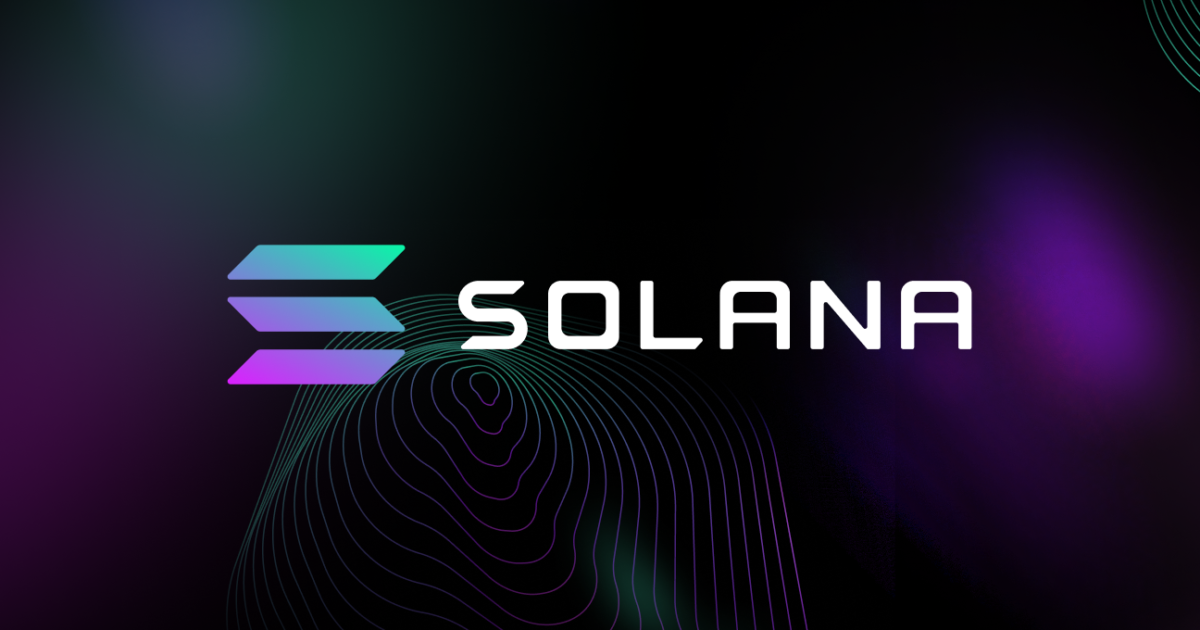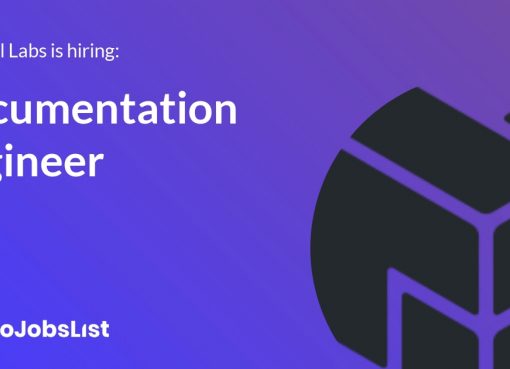Almost a year and a half after its mainnet beta launch in March 2020, Solana — perhaps the hottest blockchain of the moment — is soaring. It is one of the world’s first web-scale blockchains and fastest networks, thanks to its speed and claimed throughput of 50,000 TPS (transactions per second).
Its native token, SOL, experienced a 72% price surge over the past week and is now a top-10 cryptocurrency, with a market cap of US$18.3 billion and an annual growth rate of over 1,900%.
The Solana network is known as a fourth-generation blockchain that aims to solve the blockchain trilemma — creating a fast and scalable network, without compromising on its security or decentralization. The protocol introduces eight core technologies that enable transactions to scale proportionally with the bandwidth, resulting in industry-leading transaction speed and enterprise-level security.
Thanks to its robust protocol, Solana can offer a decentralized platform for DApps with global scaling potential, without the network congestion and high gas fees of the Ethereum network. Is its latest growth in investor confidence a sign that Solana is on its way toward mass adoption?
This Forkast.News explainer will explore:
- What is Solana?
- Solana’s roots
- Solana’s core features
- How does Solana work?
- Solana’s native token – $SOL
- What makes Solana stand out?
- Solana’s vision
- What does the future hold for Solana?
1. What is Solana?
Solana is a web-scale, open-source blockchain protocol that supports developers and institutions around the world to build decentralized applications (DApps) and marketplaces. Solana’s protocol is fast, secure, and censorship-resistant, which provides the flexibility of an open infrastructure required to build applications for mass adoption.
This high-performance blockchain provides the fully decentralized, secure, and highly scalable infrastructure necessary for tomorrow’s DApps and decentralized marketplaces. It leverages a set of breakthrough computational technologies that can support thousands of nodes, allowing for transaction throughput to proportionally scale with network bandwidth.
Solana uses a combination of proof-of-stake (PoS) and proof of history (PoH) consensus mechanisms to improve throughput and scalability. Consequently, the network claims to support 50,000 transactions per second (TPS), making it the fastest blockchain in the world.
2. Solana’s roots
Solana’s white paper was published in 2017 by Anatoly Yakovenko, who previously worked at Qualcomm and Dropbox, where he specialized in designing distributed systems and compression algorithms. The paper was the first description of proof of history — a new timekeeping method for distributed systems that could automate the transaction ordering process for blockchain networks.
Yakovenko teamed up with his former colleague at Qualcomm, Greg Fitzgerald, now Solana’s chief technology officer, to build a blockchain testnet based on proof of history, which was first released in February 2018.
The company behind Solana, initially called Loom, was founded by Yakovenko, Fitzgerald, and Stephen Akridge soon after. They rebranded the company to Solana Labs, to avoid being confused with Loom Network, the popular multichain interoperability solution.
Solana Labs completed a $20 million series A funding round led by Multicoin Capital in July 2019. After raising another $1.76 million from its launch auction on Coinlist, Solana’s beta mainnet launched in March 2020, with basic transaction capabilities and smart contract features.
Presently, Solana Labs remains the core contributor to the network, while the Solana Foundation, a non-profit organization based in Zug, Switzerland, is dedicated to funding and developing the blockchain’s community-building initiatives.
3. Solana’s core features
To understand how Solana works, we first need to take a look at its architecture. Below are 8 core innovations that make Solana the first web-scale blockchain.
1. Proof of history (PoH) — a clock before consensus
Despite its name, PoH is not a consensus mechanism, but a cryptographic clock that enables nodes to agree on the time order of the events on the chain, without having to talk to each other — since each node has its own clock.
PoH helps create more efficiency and higher throughput within the network by storing historical records of transactions and allowing the system to keep track of the order of events more easily.
2. Tower BFT (Byzantine fault tolerance)
Tower BFT is Solana’s implementation of pBFT (practical Byzantine fault tolerance), optimized for PoH. In essence, this is a consensus algorithm that takes advantage of the cryptographic clock, reaching consensus without having to go through a multitude of messages among nodes — consequently improving the transaction speed.
3. Gulf Stream — mempool-less transaction forwarding protocol
Gulf Stream is what enables Solana to reach 50,000 TPS. This is the protocol responsible for transaction caching and for forwarding them to the edge of the network. This allows network validators to execute transactions ahead of time, drastically reducing confirmation time and the memory requirements on validators from unconfirmed transaction pools.
4. Turbine — a block propagation protocol
Turbine is a block propagation protocol that breaks data down into smaller increments — making data transfer easier among the nodes. Turbine helps Solana address bandwidth-related issues and increase the network’s overall transaction processing speed.
5. Sealevel — parallel smart contracts run-time
This is a parallelized transaction processing engine that enables Solana to scale horizontally across GPUs and SSDs. In a nutshell, Sealevel allows for concurrent transactions on the same chain, resulting in a better runtime for the network.
6. Pipelining — a transaction processing unit for validation optimization
Pipelining is a common procedure used in CPU design. It refers to the process of assigning a stream of input data to different hardware for processing. This enables quick transaction information to be replicated and validated faster across the nodes of the network.
7. Cloudbreak — horizontally-scaled accounts database
Cloudbreak is a data structure required for the network’s scalability and throughput. It organizes the database of accounts, making concurrent reads and writes between the network’s 32 threads possible.
8. Archivers — distributed ledger storage
Solana’s validators offload the data to a network of nodes known as Archivers. Archiver nodes can be basic laptops or PCs that the network leverages for data storage.
4. How does Solana work?
Solana is considered one of the most high-performance permissionless blockchain on the market, with a network of 200 distinct nodes that generate a throughput of 50,000 TPS when running with GPUs. The network achieves this due to its unique consensus architecture.
Solana uses a proof-of-stake (PoS) consensus model, like Cardano and Tron, except it is reinforced by Tower BFT consensus. Tower consensus enables the network to reach consensus, despite potential attacks from malicious nodes.
Tower BFT enforces a universal source of time across the network through proof of history. This creates a common record of all the events and transactions on the blockchains, as a permanent reference for the nodes running the network.
People often mistake PoH, one of Solana’s core innovations, for a consensus protocol; however, this is a permissionless, globally available source of time on the blockchain that works before the network reaches consensus. Proof of history is not a consensus protocol or anti-Sybil mechanism. Rather, it is a decentralized clock that helps secure the blockchain.
Tower BFT leverages this permissionless clock to reduce the processing power necessary for transactions — since the timestamps of the previous transactions don’t need to be processed anymore. This is one of the features that make Solana’s leading throughput possible.
Sealevel, Solana’s transaction parallelization system, also plays a fundamental role, by enabling parallel smart contract runtime. This optimizes the network’s resource usage and enables its horizontal scaling across GPUs and SSDs.
Solana’s mempool system (contraction of memory and pool), Gulf Stream, is also different from other popular blockchains, as it forwards the transactions to validators before the previous set of transactions was even finalized. This mempool-less transaction forwarding protocol helps maximize transaction confirmation speed, as well as the concurrent and parallel transaction capacity of the network.
5. Solana’s native token – $SOL
Solana’s native token, SOL, is trading at US$65.06 at publishing time, with a maximum supply of 489 million coins and a circulating supply of 286 million tokens.
As with most smart contract platforms, SOL is used as Solana’s gas token, used to pay for all on-chain transactions and smart contracts. Investors can also use SOL to perform micropayments, also referred to as lamports within the ecosystem.
SOL token holders can also earn rewards by supporting the network with a process called staking. This involves staking a minimum of 0.01 SOL to become a node that helps validate transactions on the blockchain, in exchange for more SOL coins.
6. What makes Solana stand out?
Solana is often referred to as the most scalable and first truly web-scale blockchain in the world, as it’s among the few protocols achieving over 1,000 TPS.
Moreover, Solana claims to support over 50,000 TPS, with over 200 nodes on the current testnet — making it by far the most performant blockchain network. In comparison, proof of work-based systems like Bitcoin support approximately 5 transactions per second, while Ethereum currently averages around 13 TPS. This makes Solana around 10,000 times faster than Bitcoin and 3,800 times faster than Ethereum.
Another unique aspect about the network’s performance is that it is achieved without using off-chain or layer 2 solutions, whereas Ethereum is reliant on Polygon’s Plasma Chains and similar scaling solutions. Thus, Solana remains one of the few layer-1 blockchain protocols that isn’t exposed to the mass exit problem and other risks associated with layer-2 networks.
Solana has an average block time of 600 milliseconds, which is the time it takes to create a new block on the blockchain. As for fees, the network averages US$0.00025 per transaction, which is a fraction of a cent. To put this in perspective, a US$1 million transaction would cost about US$10 on Solana, whereas the same transaction on Ethereum would cost approximately US$300,000, as Ethereum currently averages US$6.86 per transaction.
To demonstrate how fast the network is, the team behind Solana created a break test, which enables participants to send as many transactions as possible to test the robustness of the network.
7. Solana’s vision
Solana is a web-scale, censorship-resistant blockchain, working on solving some of the most pressing issues in the industry — speed and scalability for global adoption, without sacrificing any of the inherent properties of a robust layer-1 protocol.
Solana aims to solve the scalability issue with its high-performance protocol, which implements a revolutionary time architecture, transaction processing mechanism, and more efficient consensus model compared to other blockchains, making it the world’s fastest layer-1 network.
Solana’s open infrastructure empowers developers to easily deploy scalable DApps with composable building blocks without dealing with additional friction caused by sharding and other layer-2 solutions.
Solana’s ultimate goal is solving the blockchain trilemma, which hypothesizes that a decentralized network can only satisfy two out of the three main properties — decentralization, security, and scalability. Solana claims to have solved the trilemma with its eight core innovations, but whether this is enough to inspire mass blockchain adoption remains to be seen.
8. What does the future hold for Solana?
Solana is still a relatively new project, having only launched its mainnet beta in March 2020. Yet, Solana’s native coin, SOL, has already climbed among the top 10 cryptocurrencies by market capitalization. Despite offering complete functionality to its users, the mainnet is officially still in beta, to mark that the team is still working on improving the network’s features and stability.
The network already hosts several great projects, with partners like USDC, Chainlink, Kin, BSN, Exodus, and Serum, a decentralized exchange that surged 1,500% only 12 hours after its launch. With over 250 projects in the ecosystem, increasingly more developers are choosing to build on Solana, as its blockchain offers some of the lowest latency and gas costs on the market — two of the most important considerations for decentralized applications.
The biggest Solana Season Hackathon yet was also concluded on June 7, with 13,000 registrants and more than 300 projects submitted.
“Solana is build-ready today. After seeing explosive growth in global developer uptake, we are convinced that scalability and throughput in blockchain are now a solved problem. This is an inflection point akin to the moment that PCs became widely accessible in the 1970s,” said Yakovenko, co-founder and CEO of Solana Labs, in a press release.
In June, the bullish news surrounding the network contributed to a positive market sentiment among investors, as Solana Labs completed a US$314.15 million private token sale led by Andreessen Horowitz and Polychain Capital.
“The next phase is onboarding a billion users. Solana was built from the ground up to accommodate this scale. With this funding, Solana Labs is now positioned to bring in the right partners and capital to build products and tooling to get there,” added Yakovenko, on the future direction of the network.
With the network’s speed, low-cost transactions and industry-leading throughput, it would not be surprising if the Solana ecosystem attracts increasingly more projects in the future, fostering global blockchain adoption. The current market certainly thinks so.




